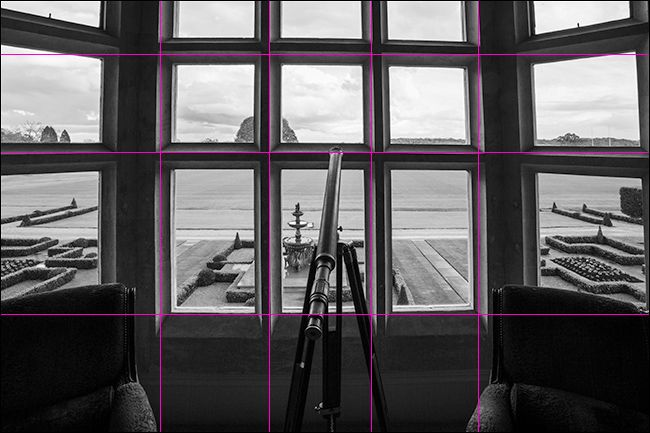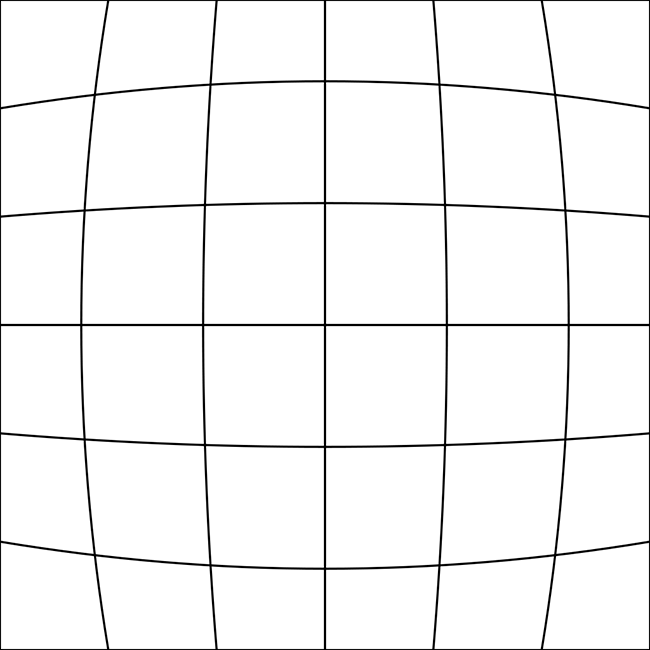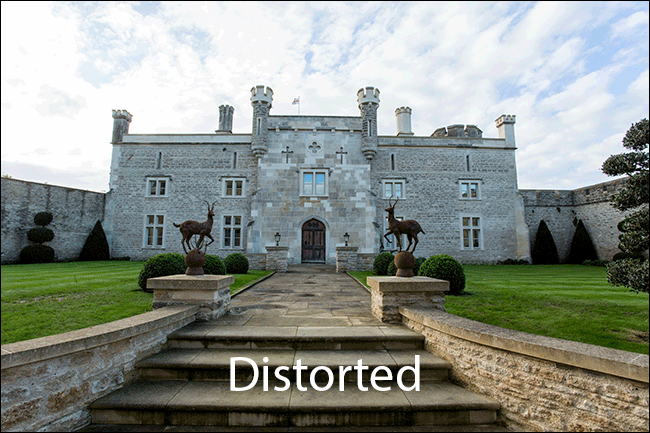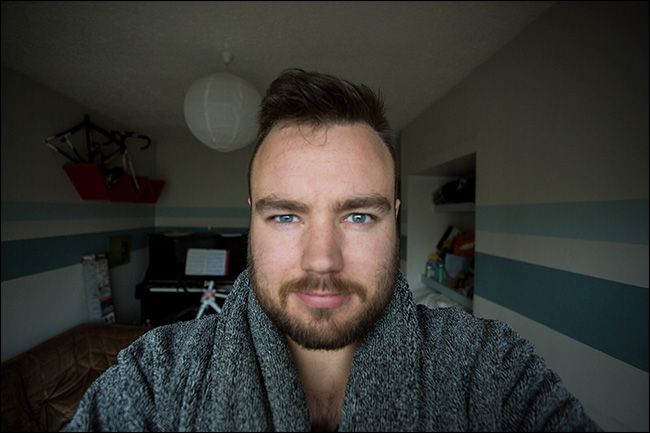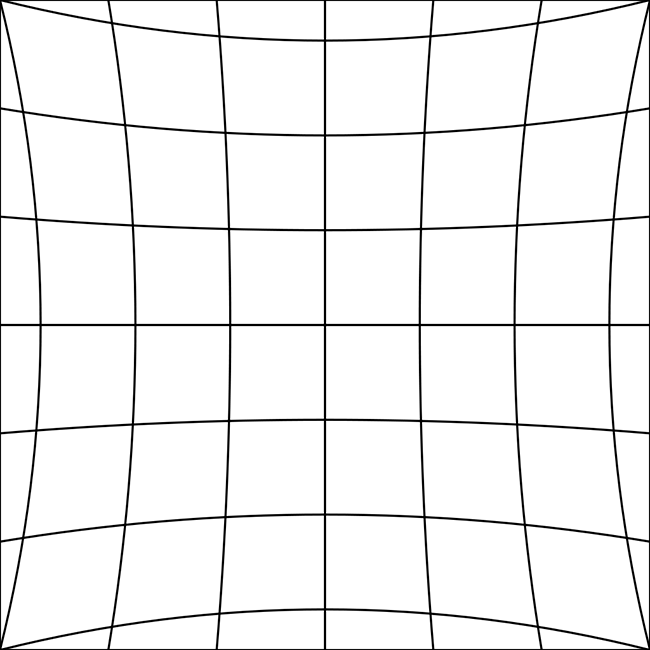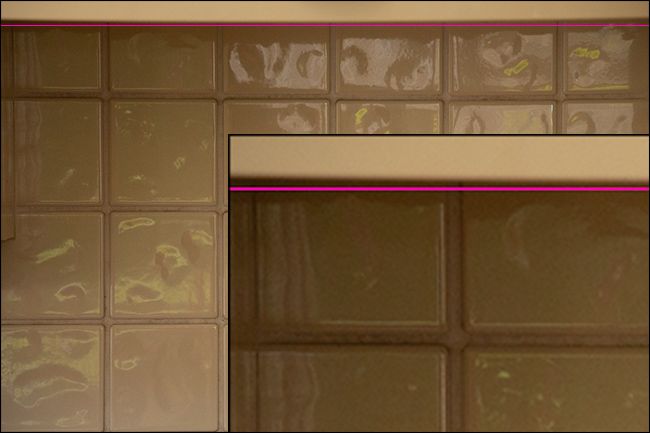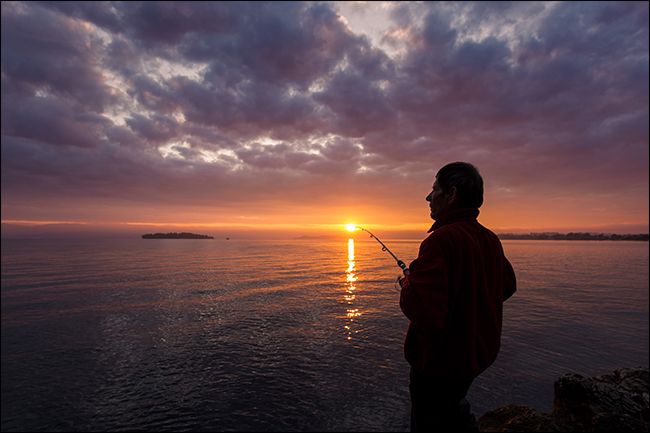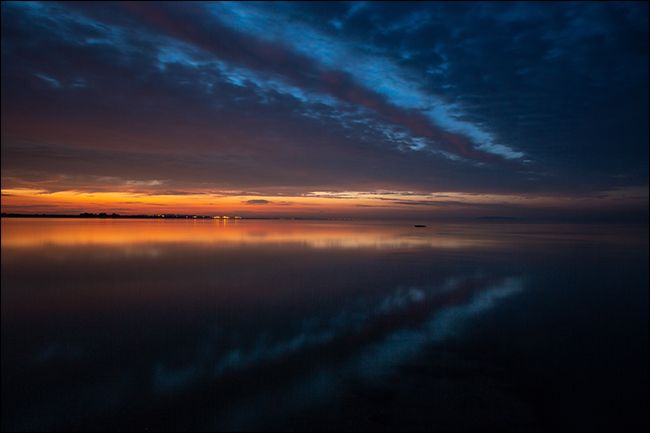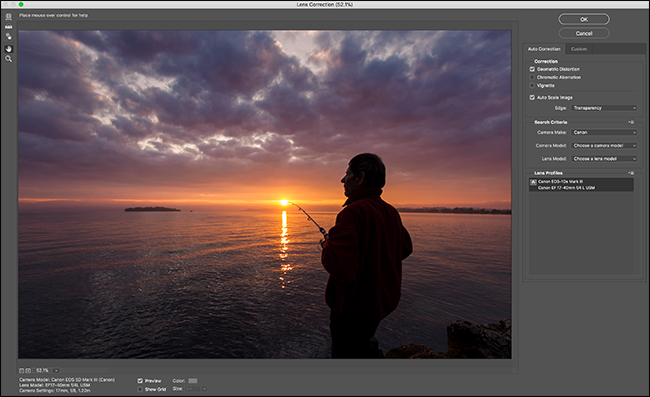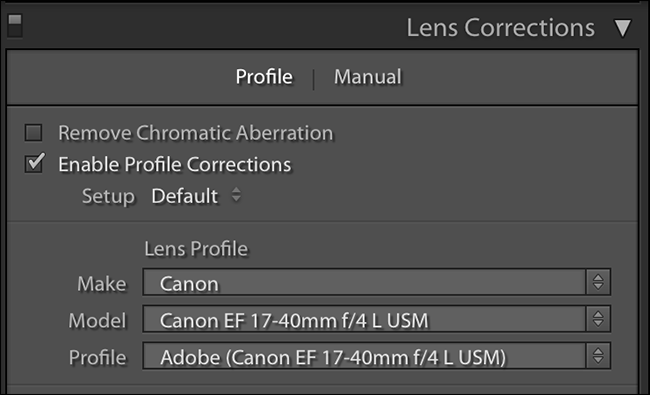Lenses aren’t just dumb tubes that you attach to your camera; they manipulate light in complex ways. One of the side affects of this is optical distortion. Let’s look at it in more detail.
You are most likely to notice optical distortion in your images when you are taking photos of things with straight lines---like buildings. What’s actually a straight line in real life might appear curved in your photo. You can see this with the window frame in the example below. I’ve added some guidelines to make the distortion easier to see. Note how the wooden slats bow slightly, especially as you move farther from the center of the photo.
Optical distortion is distinct from perspective distortion, which is where different lenses with different focal lengths give different fields of view and display foreground and background objects differently. For more on perspective distortion, check out our article on the normal focal length.
There are two main kinds of optical distortion: barrel distortion (seen above) and pin cushion distortion. Let’s look at each in turn.
Barrel Distortion
With barrel distortion, straight lines appear to bend outwards from the center of the image. It normally occurs when you shoot with a wide angle lens, but you'll see the same effect with other, longer lenses in certain circumstances. An exaggerated version of the distortion pattern looks like this.
What’s happening is that the magnification of the image decreases as you move further towards its edges, which gives the effect of bending lines. It’s called barrel distortion because the image looks like it’s been mapped onto a sphere or barrel. You can really see that effect in the GIF below.
Barrel distortion is the most common kind of distortion you’ll run into, especially if you shoot with wide angle lenses. While it’s possible to adjust it using Photoshop or Lightroom, you’ll never get rid of it entirely, since it’s a property of the lenses you’re using. Professional architecture photographers spend thousands of dollars on wide angle lenses that don’t have it for a reason.
The biggest problem with barrel distortion isn’t what it does to straight lines in landscape or architectural photos, but what it does to portraits. In the image below, you can see my nose looks weirdly huge and my—normally spectacular—face looks like something from a Hollywood creature feature.
Barrel distortion is one of the reasons that the best portrait lenses tend to be telephoto lenses; wide angle lenses just aren’t very flattering.
Pincushion Distortion
Pincushion distortion is, in some respects, the opposite of barrel distortion. It normally occurs when you’re shooting with a long telephoto lens—say, 200mm—and it makes lines appear to bend inwards towards the center of the image. Below is an exaggerated distortion pattern.
The magnification of the image is increasing closer to the edges, which gives the apparent bending effect. It’s more obvious closer to the edges of the image, like in this shot of a cupboard in my kitchen. I’ve added a guideline and a close up so you can see the effect.
Pincushion distortion is pretty common with cheaper telephoto lenses. More expensive lenses have elements that minimize the effect. In particular, the telephoto end of long zoom lens—like for example, an 18-300mm lens—tend to display it.
Note: There is another distortion type called mustache distortion, which is a combination of both barrel and pincushion distortion. It’s so called because the distortion lines in the top half of the image take on the shape of a handlebar mustache. It’s the rarest kind of distortion and you’ll normally only see it if you’re working with old film lenses.
What Can You Do About Optical Distortion?
Optical distortion is a property of the gear you use and, as such, you can’t really do a huge amount about it when you’re shooting other than be aware that it happens and know your equipment. If you’ve got a lot of money to invest, you can buy expensive lenses that exhibit less optical distortion. If you're not willing to put that kind of money into it, you'll just have to accept a bit of distortion.
Distortion, however, isn’t always a bad thing. Barrel distortion is a part of using a wide angle lens and can actually add to the drama of landscape images; pincushion distortion can make portrait subjects look thinner. The reality is if you’re trying to shoot a perfect brick pattern, it might have a detrimental affect on your image but, if you’re shooting a real world subject and you aren’t all up in their face with a very wide angle lens, then you probably won’t notice it too much.
The shot below, for example, is a portrait taken with a wide angle lens at 17mm on a full frame camera—that’s almost as wide as wide angle lenses go.
Here’s a landscape shot at the same focal length. There’s some barrel distortion going on, but who cares?
You can also do a lot to fix distortion using Photoshop or Lightroom. They have built in tools that can apply distortion profiles for hundreds of the most popular lenses.
In Photoshop, open the image and go to Filters > Lens Correction. If Adobe has a distortion profile for your lens, it will automatically be applied.
In Lightroom, in the Develop Module under Lens Corrections, check the "Enable Profile Corrections" box.
These tools won’t fully eliminate any distortion, but they will minimize the effect.
Optical distortion is just a part of taking photos with imperfect lenses—and all lenses are, by their very nature, imperfect. You can reduce the effect of the distortion by being aware of why (and when) it happens, choosing the right gear for the photo, and using post processing.


